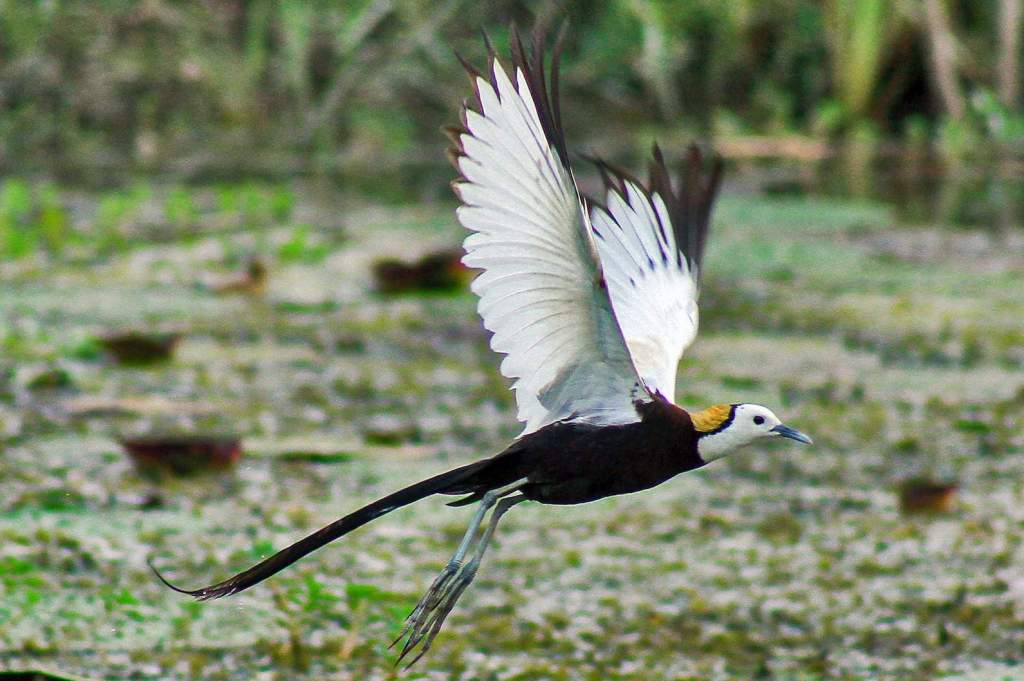Pheasant-tailed Jacana (Hydrophasianus chirurgus) is striking white and chocolate-brown rail-like water bird with enormous feet and a distinctive, long, pointed sickle-shaped tail. Both sexes are similar. In non-breeding plumage chiefly pale brown and white, with a black necklace on upper breast, and minus the long tail excluding the tail plumes, that of the Partridge. Gregariously—in non-breeding season often large flocks—on vegetation-choked tanks. The long tail bird is resident throughout the Indian Empire, Pakistan, up to about 6,000 ft. in Kashmir. Beyond, eastwards, to S. China, Philippines and Java.
This handsome Pheasant-tailed Jacana is common on every lotus or marsh-covered jheel, tank or swamp of any size. In general habits it closely resembles its Bronze-winged cousin, except perhaps that it keeps more to the open and is less skulking. While strictly resident, the birds are forced to move about a good deal locally, as the waters they inhabit gradually dry up in summer. Its enormous toes are admirably adapted for a life on floating aquatic vegetation. They help to distribute the weight of the bird over a large area, so that it can run over the most lightly floating leaf without producing a ripple.







